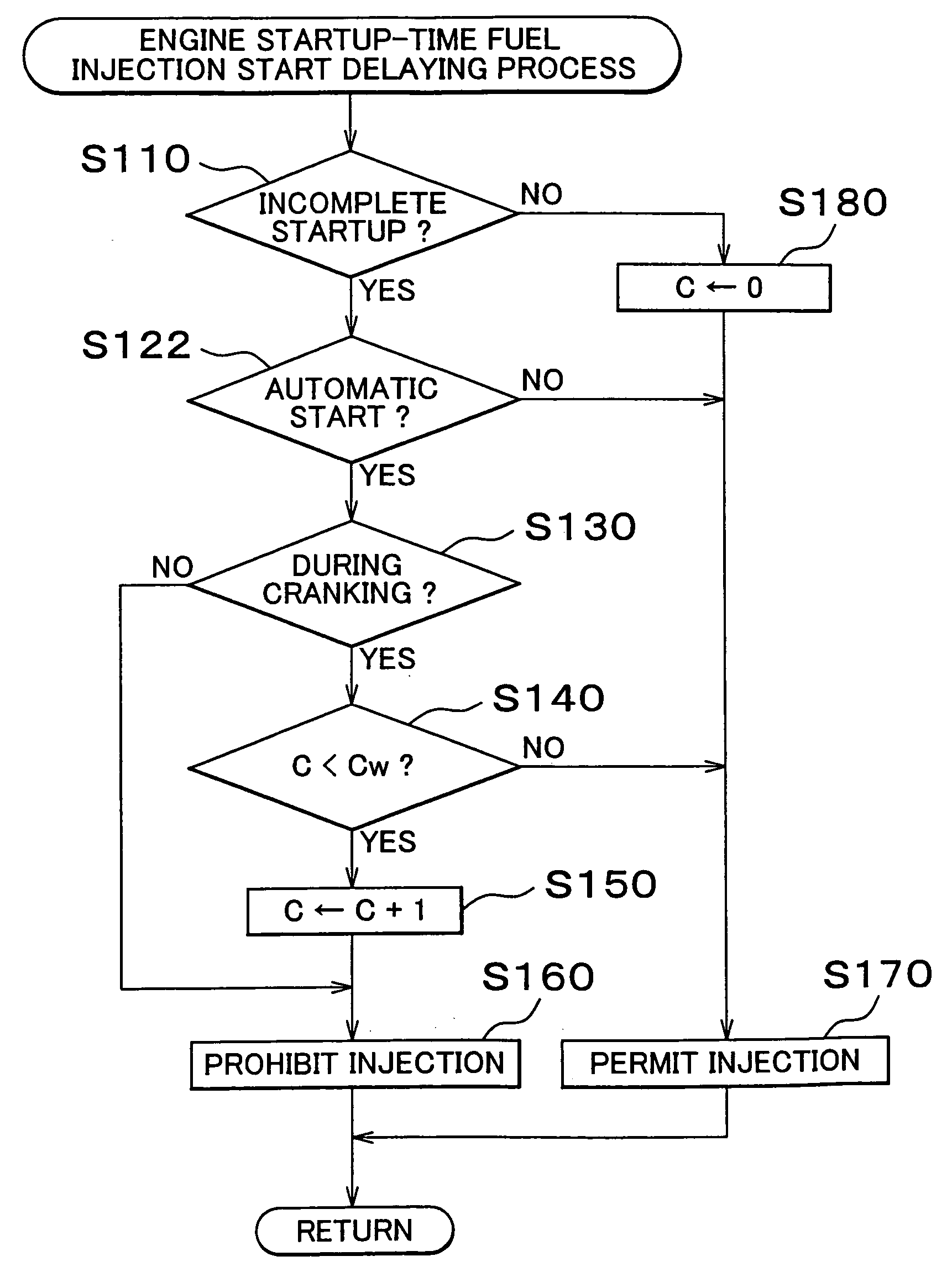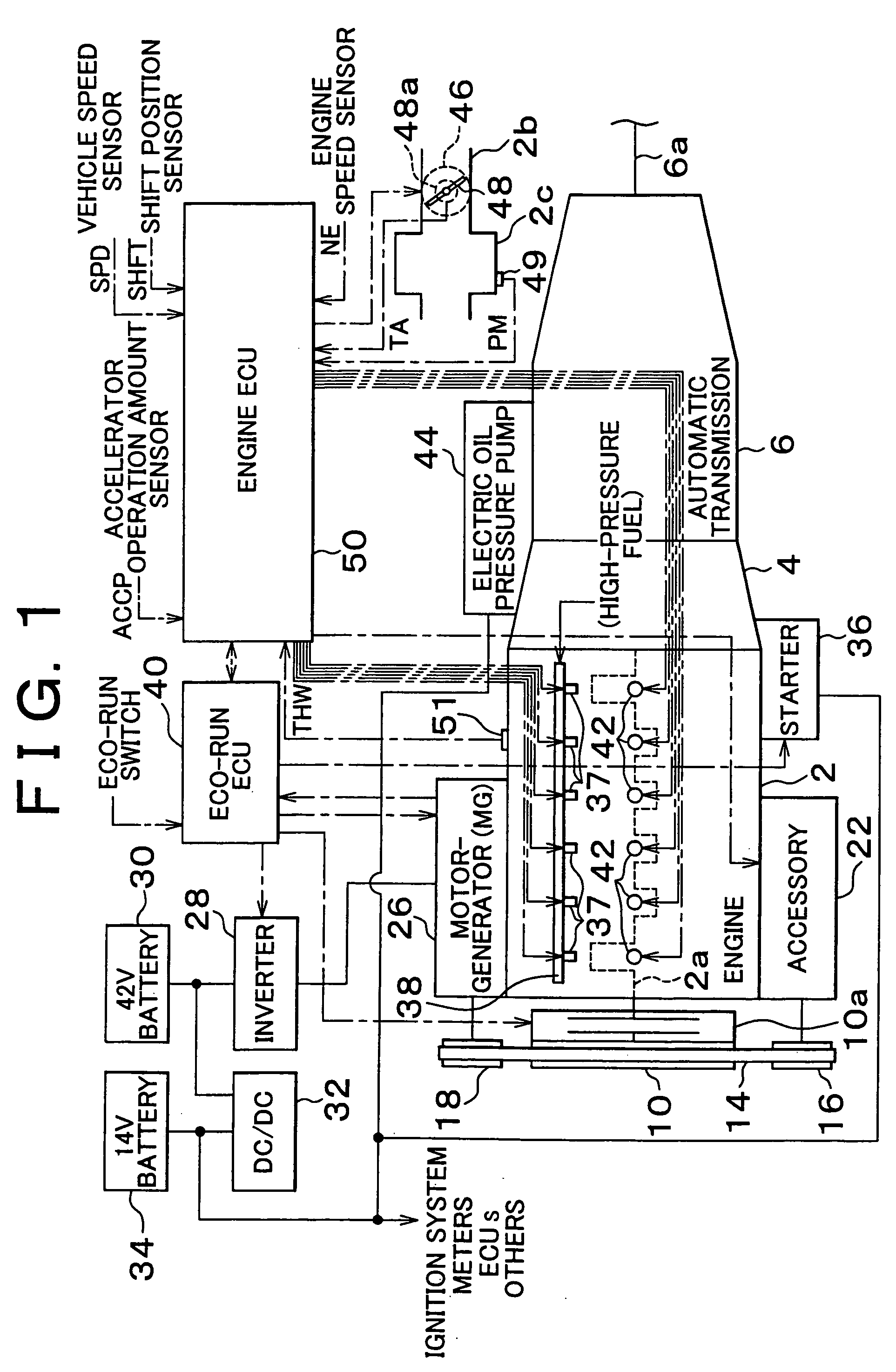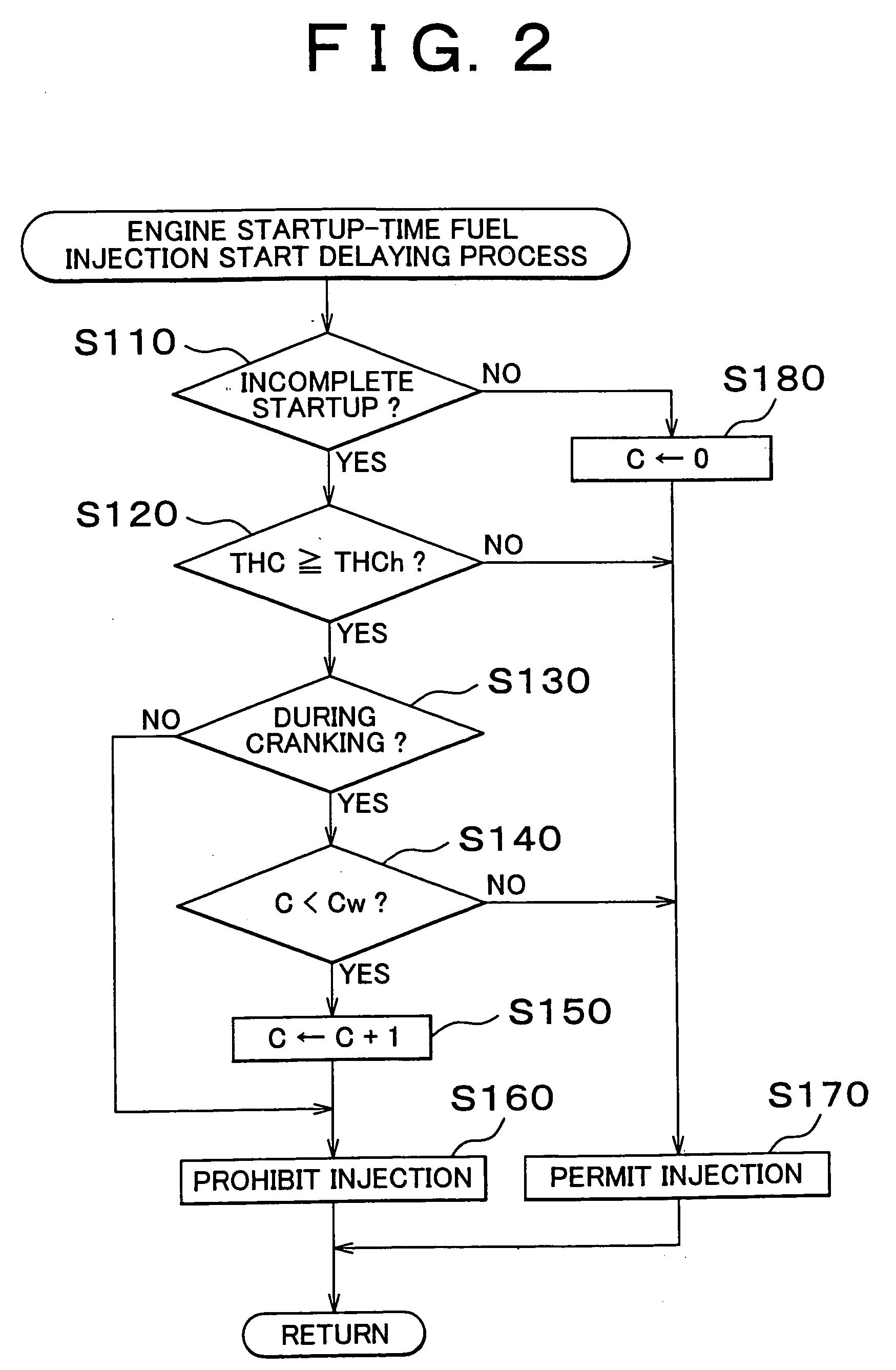Startup-time control apparatus and stop-time control apparatus of internal combustion engine, and control methods thereof, and record medium
a technology of stop-time control and control apparatus, which is applied in the direction of engine starters, electric control, speed sensing governors, etc., and can solve problems such as danger of pre-ignition
- Summary
- Abstract
- Description
- Claims
- Application Information
AI Technical Summary
Benefits of technology
Problems solved by technology
Method used
Image
Examples
embodiment 1
[0043] [Embodiment 1]
[0044]FIG. 1 is a diagram illustrating a system construction of a vehicular internal combustion engine and a control apparatus thereof to which the invention is applied. In this embodiment, the internal combustion engine is a direct injection-type gasoline engine (hereinafter, referred to as “engine”) 2.
[0045] Output of the engine 2 is transferred to the side of an output shaft 6a via a crankshaft 2a, a torque converter 4, an automatic transmission (hereinafter, referred to as “AT”) 6, and is finally transferred to wheels. Separately from this power transfer train from the engine 2 to the wheel, output of the engine 2 (torque) is also transferred to a belt 14 via a pulley 10 connected to the crankshaft 2a. The torque transferred to the belt 14 rotates other pulleys 16, 18. The pulley 10 is provided with an electromagnetic clutch 10a. The electromagnetic clutch 10a is switched on (engaged) or switched off (disengaged) in accordance with need, thus allowing selec...
embodiment 2
[0073] [Embodiment 2]
[0074] This embodiment differs from Embodiment 1 in that the engine ECU 50 executes an engine startup-time fuel injection start delaying process illustrated in FIG. 5 at every 120° CA, instead of the process illustrated in FIG. 2. The engine startup-time fuel injection start delaying process (FIG. 5) is substantially the same as the process of FIG. 2, except that step S122 is executed in placed of step S120. Step S122 corresponds to a process performed by the automatic startup determining portion.
[0075] That is, if there is an incomplete startup state (“YES” at S110), it is then determined whether the startup is an automatic startup (S122). If the startup is not an automatic startup but is a manual startup (“NO” at S122), fuel injection from the fuel injection valves 37 is immediately permitted (S170). Then, the process temporarily ends without any further processing.
[0076] Conversely, if the startup is an automatic startup (“YES” at S122), the process of step...
embodiment 3
[0082] [Embodiment 3]
[0083] This embodiment differs from Embodiment 1 in that the engine ECU 50 executes an engine startup-time fuel injection amount reducing process illustrated in FIG. 6 at every 120° CA, instead of the process illustrated in FIG. 2.
[0084] When the engine startup-time fuel injection amount reducing process (FIG. 6) starts, it is first determined whether there is a startup (including an automatic start and a manual startup) that is yet to be completed (S310). If there is an incomplete startup state (“YES” at S310), it is then determined whether cranking is being performed (S320). If cranking is not being performed (“NO” at S320), the process temporarily ends without any further processing.
[0085] If cranking is being performed (“YES” at S320), it is then determined whether the combustion chamber temperature THC is higher than or equal to the high-temperature criterion THCh (S330). If THC330), a reducing correction value dQ for reducing the amount of fuel injection...
PUM
 Login to View More
Login to View More Abstract
Description
Claims
Application Information
 Login to View More
Login to View More - R&D
- Intellectual Property
- Life Sciences
- Materials
- Tech Scout
- Unparalleled Data Quality
- Higher Quality Content
- 60% Fewer Hallucinations
Browse by: Latest US Patents, China's latest patents, Technical Efficacy Thesaurus, Application Domain, Technology Topic, Popular Technical Reports.
© 2025 PatSnap. All rights reserved.Legal|Privacy policy|Modern Slavery Act Transparency Statement|Sitemap|About US| Contact US: help@patsnap.com



